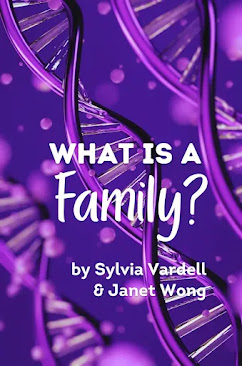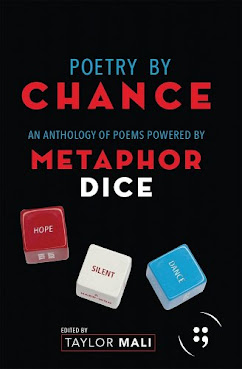All one has to do is read like a Writer.
(Picture my smiling face here.)
I’m proud to say I came to this consideration from personal experience, an experience I shared in the September/October 2008 SCBWI Bulletin article “The Book That Changed Me.”
Really and truly, Marjorie Weinman Sharmat’s and Kay Chorao’s picture book I’m Terrific (Holiday House, 1977) changed my writer’s life.
I discovered I’m Terrific with my almost-three year old son on the New Books shelf during a Moms-and-Tots visit at my Wilmette Public Library. The cover grabbed our attention. The smallish bear was obviously self-contented and we liked the soon-to-be-awarded gold star in the robin’s beak.
By story’s end, Jason Bear’s tale had struck a chord in my toddler’s heart.
But….the tale and the telling had struck a chord in my heart, too: the first-ever picture book I was writing looked and felt the same.
I spent days reading and re-reading I’m Terrific, only minus the toddler and wearing my Writer’s Cap.
Admittedly, I was first looking to learn the how-to of the picture book format. I began by typing out Sharmat’s text as it appeared on the pages, leaving triple-spaces for each successive page turn.
I indented where the author indented, placing characters’ words within quotation marks. Dialogue, I sensed, contributed immediacy and energy, and that fine balance between narrative and dialogue moved along the story. I noticed repetition of both phrases and sentence structure. The sentences themselves offered noun-verb clarity, yet my fingers felt the rhythm of Sharmat’s playful words.
Jason Bear’s three friends - Raymond Squirrel, Marvin Raccoon and Henrietta Emily Bear, appeared within the building scenes, always in the same order, creating the expectation necessary for young listeners. Jason’s Mama claimed the transitional scenes. Each scene called for a new and different setting. A star-studded Jason spoke the story’s final words. “Thank you,” he said, once his friends dubbed him terrific.
Next, I revisited Kay Chorao’s soft, penciled illustrations. I covered the text and read the story visually, as my toddler son did. The pictures said it all, amplifying characters’ actions, re-actions and emotions.
Finally, I cut apart one of my carbon-ed (!) text copies, paragraph by paragraph, then re-pasted the words to the pages of the blank 32-page book I’d created. I left space for the front matter, then room for the accompanying illustrations.
Just like that, I suddenly got it!
A picture book story is told across fourteen double-page spreads, creating, sort of, a play’s three acts!
And within each newly-set changing scene, the characters speak their thoughts and feelings as the action worsens!
And, Yes: everything comes together at the end, tied up with a bow! There wasn’t one part of Jason’s story hanging out, un-tethered.
The Good News is, I didn’t stop there, with my how-to education of the picture book format.
I kept on going, reading my way through all of Sharmat’s work, meeting Lucretia the Unbearable, Dudley Possum and Thornton the Worrier. Each of Sharmat’s books introduced me to a new publisher, perhaps one for my stories – Harper, Dutton, and others now gone or since renamed. Soon I was studying their catalogues, holding and reading each publisher’s offerings, coming to know their singular sensibilities. Each picture book also introduced me to a new and wondrous illustrator – Emily Arnold McCully, Marc Simont and Rosanne Litzinger, who eventually illustrated my picture book Chicken Soup by Heart. In turn, each illustrator introduced me to yet another author and publisher. I deconstructed and rebuilt Sharmat’s Nate the Great to learn how to write easy-to-reads; I did the same and learned novel writing, thanks to Sharmat’s Maggie Marmelstein.
In other words, reading I’m Terrific as a reader, the book amused and delighted me, as it should have. But reading I’m Terrific as a writer, the book informed and inspired me, as only it could have. The structure and nuances of the picture book format, an author’s and illustrator’s body of work, new artists, new publishers, new works, new formats – all were mine to know and treasure from but one focused study. Jason Everett Bear and Mesdames Sharmat and Chorao deserve buckets of gold stars for all they taught me.
I still turn to children’s books to learn and hone my craft; I encourage my students and writers to do the same.
This past year I’ve typed out one picture book biography after another, allowing my fingers to feel the flow, to come to know the essence of a telling. I’ve especially focused on biographies of African-Americans, since the subject of my picture biography is a little-known slave. Along the way I’m discovering possible editors, publishers and illustrators.
It bears repeating (may Jason Bear forgive me): every book published (traditionally or otherwise), is a Teacher-in-Waiting.
All one has to do is read like a writer.
Esther Hershenhorn
P.P.S
I just finished reading Scott Turow’s Innocent. I’m currently reading Lauren Oliver’s Before the Fall.
Stacked atop my bedroom night table this summer, awaiting my attention, are the following books:
John Grisham’s Theodore Boone, Kid Lawyer
Rachel Vail’s Justin Case
Julia Durango’s Sea of the Dead
Stephen Swinburne’s Wiff and Dirty George.
Becky Levine’s The Writing & Critique Group Survival Guide (which I’ll be reviewing for TeachingAuthors)
The following ARCs picked up at IRA have their own pile:
Deborah Wiles’ Countdown
Andrea Beaty’s Attack of the Fluffy Bunnies
Sarah Dooley’s Livvie Owen Lived Here
Susan Meddaugh’s Martha On the Case (Crime Stories)
P.P.P.S.
On Mother’s Day, I became the proud owner of a (I can’t believe I’m writing this….) Kindle!
I can’t imagine ordering up a children’s book title for this spiffy electronic vessel.
But the following books are locked and loaded:
Anna Quindlan’s Every Last One
Joseph Epstein’s The Love Song of A. Jerome Minkoff: And Other Stories.
Lisa Kogan’s Someone Will Be With You Shortly













6 comments:
Esther,
What a coincidence--Stephen Swinburne’s Wiff and Dirty George is on my to-read pile as well. I saw it on display at my library and couldn't resist.
And special thanks for sharing Kay Chorao's beautiful autograph to you!
I've loved the Nate the Great books ever since I read them with our kids many years ago, but I never knew Marjorie Weinman Sharmat wrote so many other books! Thanks for letting me know--I'll search for more of them next time I go to the library.
Hi there --
I just discovered your blog and love it. I'm the social media editor for tiger tales -- a publisher of colorful, whimsical, sweet board and picture books. I hope you (all)will check out our facebook page and consider becoming a fan! http://www.facebook.com/#!/pages/Wilton-CT/tiger-tales/183496001305?ajaxpipe=1&__a=4
Happy Reading,
Elizabeth Bennett
tiger tales
Thanks for stopping by, Elizabeth. I just became one of your Facebook Fans.
Great article Esther, Thanks.
I had no idea John Grisham had written a young reader's book. I love his books, so I will have to add that to my reading list, it should be an interesting read.
I am new to your blog but I love that it matches up with what I'm doing on my blog. As a teacher, I'm reviewing books based on how they can be used to work on reading with kids but also how to use them as mentor texts for kids to read and get ideas for writing. I love the idea is "reading as a writer", it does put a completely different perspective on reading. I've been able to notice all the literary elements in the writing I've read, but it's harder to focus in on the patterns in writing and to pick up on those...I'm getting better at changing my thinking though!!!
Post a Comment